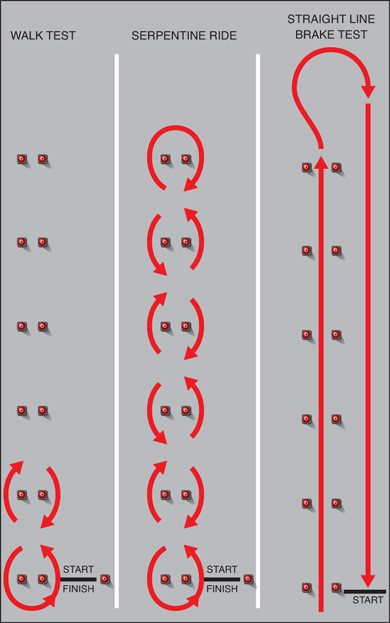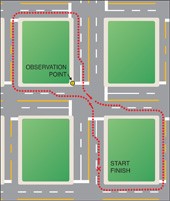Level One road test
Statistics show that new drivers of any age are far more likely to be involved in serious or fatal collisions than experienced drivers.
To help new drivers develop better, safer driving habits, Ontario introduced graduated licensing in 1994 for all drivers applying for their first car or motorcycle licence. Graduated licensing lets you gain driving skills and experience gradually, in lower-risk environments. The two-step licensing system takes at least 20 months to complete and includes two road tests.
Passing the Level One (M1) road test allows you to move to Level Two and receive a Class M2 licence. If you have passed the test on a limited-speed motorcycle or a moped, an L condition is added to your driver’s licence. The L condition means you are restricted to driving a limited-speed motorcycle or moped on only certain roads.
If you have passed the test on a three-wheeled motorcycle, an M condition is added to your driver’s licence. The M condition means you are restricted to driving only three-wheeled motorcycles.
The Level One road test deals with basic driving skills. It includes a three-part motorcycle skill test. Sets of two cones placed one metre apart, with each set 4.5 metres apart (from the centre of the cone), are used to test your skill in manoeuvring your motorcycle.
Road tests are conducted according to set time frames. It is best to arrive early in order to complete the registration process and be ready for your test at the proper time. When you arrive, your examiner will tell you how long you have to complete the test.
The following details each part of the Level One test:

Walk test
Walk the motorcycle or moped around the cones in a figure eight, preferably with both hands on the handgrips. Without losing control or dropping the vehicle, stop the front wheel on the stop line at the end of the figure eight.
Serpentine drive
While moving slowly and keeping both feet on the footrests, drive in a serpentine pattern in a controlled manner.
Straight line brake test
While moving slowly and keeping both feet on the footrests, drive in a straight line between the rows of cones. Turn and accelerate in preparation for the brake test. Bring the vehicle to a quick, safe, controlled stop using both brakes evenly with the front wheel on the finish line.
This test is to determine balance and control at low speeds and is meant to be done in one continual motion. If you must put a foot down or you knock a cone over, recover as best you can and continue on.
Note: All Drive Test Centres may not be able to accommodate Level One tests for motor tricycles. For more information, you should check the DriveTest website at www.drivetest.ca.
On-road driving demonstration
This illustration shows a typical on-road driving route used at DriveTest Centres across the province that give motorcycle tests.
Your examiner will watch your demonstration from a strategic location where the bike can be observed at several intersections. You are expected to obey all the rules of the road, signal all your intentions, maintain a good blocking position, keeping yourself visible to other traffic. You will be marked on your lane positioning, your turning arcs, your use of the vehicle’s controls and your observation of traffic.
